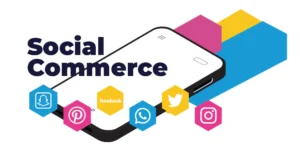Explore the ethical implications of AI in social media, including transparency, bias, privacy, and creative integrity. Learn how to use artificial intelligence responsibly while maintaining trust and authenticity.
Introduction: The Growing Influence of AI in Social Media
Artificial intelligence has become a cornerstone of social media—driving content creation, audience targeting, and engagement strategies. From AI-generated captions to deepfake influencers, the technology offers unprecedented efficiency. However, its rapid adoption raises pressing ethical questions:
- How transparent should creators be about AI use?
- Can algorithms avoid reinforcing bias?
- Are users’ data rights protected when AI systems learn from their behavior?
A Pew Research Center study found that 76% of users feel uneasy about AI-generated content, fearing misinformation and manipulation. As AI tools become more accessible, creators and brands must navigate these concerns thoughtfully. This guide explores the key ethical challenges and offers actionable insights for responsible use.
The Rise of AI in Social Media
AI is no longer a futuristic concept—it’s embedded in daily social media operations.
Common AI Applications:
- Content Creation: Tools like Jasper, Copy.ai, and Canva Magic Design generate posts, scripts, and visuals.
- Trend Prediction: Platforms like TikTok’s Creative Center use AI to identify viral sounds and hashtags.
- Audience Targeting: Tools like Meta Ads Manager and Google Performance Max automate ad placements.
- Chatbots and Community Management: Drift and Chatfuel handle customer interactions at scale.
Why It’s Beneficial:
- Time Efficiency: Automating repetitive tasks frees creators for strategic work.
- Personalization: AI tailors content to audience preferences, boosting engagement.
- Cost Savings: Smaller teams can compete with big brands using AI tools.
Case Study: Beauty brand Fenty Beauty used AI to analyze UGC (user-generated content) and identify trending makeup styles, informing their product launches and marketing strategy.
Transparency and Disclosure: The Right to Know
One of the most debated ethical issues is whether AI-generated content should be labeled. A Sprout Social survey revealed that 68% of consumers feel deceived when they later discover content was AI-generated.
Why It Matters:
- Trust Erosion: Concealing AI use can damage credibility.
- Platform Policies: TikTok, Instagram, and YouTube are introducing AI disclosure requirements.
- Legal Implications: The EU’s Digital Services Act and the US FTC guidelines are pushing for transparency.
How to Stay Ethical:
- Label AI Content: Use disclaimers like “AI-generated” or “AI-assisted.”
- Educate Your Audience: Explain how AI enhances your work without replacing human input.
- Respect Platform Guidelines: Follow Instagram’s policies on AI-generated media and TikTok’s rules on deepfake labeling.
Example: Tech reviewer @GadgetInsights clearly labels AI-generated summaries as “Edited with AI,” maintaining trust while streamlining workflows.
Bias and Fairness in Algorithmic Decision-Making
AI learns from existing data—and that data often reflects human biases. A MIT Technology Review study found that AI-driven ad targeting showed racial and gender disparities in job search platforms.
The Risks:
- Reinforced Stereotypes: Beauty brands using AI to generate idealized body types may promote unrealistic standards.
- Exclusionary Content: Algorithms trained on biased data can marginalize underrepresented groups.
- Misinformation Amplification: AI tools that auto-generate news summaries may spread inaccuracies.
How to Mitigate Bias:
- Diversify Training Data: Use diverse datasets to train AI models.
- Human Oversight: Review AI-generated content for unintended bias.
- Ethical AI Tools: Platforms like IBM Watson OpenScale offer bias-detection features.
Case Study: A travel brand using AI to suggest destinations noticed an overrepresentation of Western locations. By retraining its model with diverse travel blogs, it improved global inclusivity and engagement.
Privacy and Data Security: Who Owns the Data?
AI systems rely on vast amounts of data to function. But who owns that data—and how is it being used?
Key Privacy Concerns:
- Data Collection: Users often don’t know their content is used to train AI models.
- Deepfakes and Identity Theft: AI-generated videos can impersonate real people without consent.
- Surveillance Marketing: AI tools track behavior to hyper-target ads, raising ethical red flags.
How to Protect User Data:
- Clear Consent: Disclose how AI tools use audience data (e.g., “This post uses insights from user interactions to improve recommendations”).
- Comply with Regulations: Adhere to GDPR, CCPA, and platform-specific rules on AI-generated content.
- Use Privacy-Focused Tools: Opt for AI platforms that anonymize user data.
Pro Tip: Use Brand24 or Awario to monitor brand mentions and ensure AI-generated content aligns with your values.
Creative Integrity and the Future of Originality
AI tools can generate content in seconds—but at what cost to creativity? A HubSpot report found that 60% of creators fear AI could dilute originality and devalue human work.
The Debate:
- Pro-AI: Automates repetitive tasks, freeing time for strategic storytelling.
- Anti-AI: Risks homogenizing content and reducing emotional depth.
How to Maintain Creative Integrity:
- Blend AI and Human Input: Use AI for ideation, not final execution.
- Credit Original Sources: If AI repurposes existing work, acknowledge the original creators.
- Invest in Originality: Reserve AI for scaling—not replacing—human creativity.
Example: Author Neil Gaiman uses AI to draft outlines but insists on final edits being done by humans to preserve voice and nuance.
The Impact on Employment and Industry Standards
As AI automates content creation, concerns about job displacement grow. A World Economic Forum report estimates that 10% of creative roles could be affected by AI tools by 2025.
Ethical Considerations:
- Job Displacement: Will AI replace copywriters, designers, or social media managers?
- Fair Compensation: Should influencers be paid if AI mimics their style or voice?
- Skill Evolution: How to upskill teams to work alongside AI rather than be replaced by it.
How to Navigate the Shift:
- Upskill Teams: Train employees in AI tools to enhance—not replace—their roles.
- Support Human Talent: Use AI to assist creators, not eliminate them.
- Partner with Ethical Platforms: Choose AI tools that prioritize creator rights and fair labor practices.
Authenticity vs. Automation: The Risk of Losing the Human Touch
Social media thrives on connection. But when every post is AI-generated, does authenticity suffer?
Why Human Connection Still Matters:
- Trust Building: A 2023 Later study found that posts with personal stories see 2x more saves than AI-generated content.
- Brand Loyalty: Followers connect with real people, not bots.
- Emotional Resonance: AI struggles to replicate the nuance of lived experiences.
How to Balance AI and Humanity:
- Use AI for Efficiency, Not Emotion: Let AI handle scheduling and analytics, but keep storytelling human.
- Engage Authentically: Reply to comments, share behind-the-scenes moments, and host live Q&As.
- Avoid Over-Reliance: Use AI as a tool, not a replacement for strategic thinking.
Pro Tip: Use Descript to transcribe interviews or podcast episodes, but edit for tone and personality.
Regulation and Accountability: Who Sets the Rules?
AI’s ethical use isn’t just a brand issue—it’s a regulatory one. Governments and platforms are racing to catch up.
Current Policies:
- EU’s AI Act: Requires transparency in AI-generated content and restricts high-risk applications.
- TikTok’s Deepfake Policy: Requires labeling of AI-generated videos that mimic real people.
- Instagram’s AI Guidelines: Prohibits AI-generated content that deceives or harms others.
How Brands Can Stay Compliant:
- Stay Informed: Monitor updates from the FTC, GDPR, and platform-specific AI policies.
- Audit AI Tools: Ensure your AI vendors comply with ethical standards.
- Self-Regulate: Establish internal AI ethics guidelines, even if not required by law.
Case Study: After facing backlash for using AI to clone a YouTuber’s voice, Synthesia updated its policy to require consent for voice cloning, improving trust.
Case Studies: Ethical and Unethical AI Use
1. Ethical Use: Duolingo on TikTok
- Strategy: Used AI to craft engaging captions but retained human oversight for tone.
- Result: 500K+ follower growth without compromising brand voice.
2. Unethical Use: AI Influencer Scandals
- Issue: Some brands created AI influencers that mimicked real creators without disclosure.
- Backlash: Followers felt deceived, leading to lawsuits and public relations crises.
Best Practices for Ethical AI Use on Social Media
To use AI responsibly, follow these guidelines:
1. Be Transparent
- Clearly disclose AI-generated content in captions or bios.
- Use disclaimers like “AI-assisted” or “Generated with Jasper.”
2. Prioritize Human Oversight
- Always review AI-generated content for accuracy, tone, and relevance.
- Avoid posting AI-generated content without customization.
3. Protect User Data
- Opt for AI tools that anonymize data.
- Give users control over how their data is used.
4. Support Human Creativity
- Use AI to scale, not replace, original ideas.
- Invest in creators and reward originality.
5. Stay Updated on AI Regulations
- Follow AI ethics news and policy updates.
- Adjust your strategy to comply with new laws and platform rules.
Common Mistakes to Avoid
Even well-intentioned brands can fall into ethical traps.
Mistake 1: Misrepresenting AI Content as Human
- Fix: Always disclose AI use to maintain trust.
Mistake 2: Ignoring AI Bias
- Fix: Test AI outputs for representation and fairness.
Mistake 3: Over-Automation Without Engagement
- Fix: Balance AI efficiency with real-time interaction.
Mistake 4: Using AI to Generate Fake Reviews or Testimonials
- Fix: Only use real UGC and testimonials.
Mistake 5: Relying Solely on AI for Crisis Management
- Fix: Use AI for monitoring, but handle sensitive situations with human empathy.
Conclusion: Ethical AI Is the Future of Social Media
AI offers incredible opportunities, but ethical use is non-negotiable. By embracing transparency, combating bias, and preserving creative integrity, brands and creators can harness AI’s power without compromising trust. Start by:
- Reviewing your AI tools for ethical compliance.
- Educating your team on responsible AI practices.
- Engaging your audience in conversations about AI use.
By aligning innovation with accountability, you’ll build a social media strategy that’s not only efficient but also trusted and sustainable.
FAQs
Q1: Should I disclose when I use AI to create content?
A: Yes—transparency builds trust and complies with platform policies.
Q2: Can AI-generated content be original?
A: Yes, but avoid copying others’ work. Always add your unique perspective.
Q3: How do I ensure AI doesn’t reinforce bias?
A: Use diverse datasets and human oversight to review outputs.
Q4: Are AI influencers ethical?
A: Only if they’re disclosed and don’t mimic real people without consent.
Q5: Can AI replace human creators?
A: No—AI is a tool, not a substitute for creativity and storytelling.





![Read more about the article Threads, Lemon8 & Beyond: New Platforms Worth Watching [2025 Guide]](https://www.ragereviews.co/wp-content/uploads/2025/05/lemon8-300x154.jpeg)